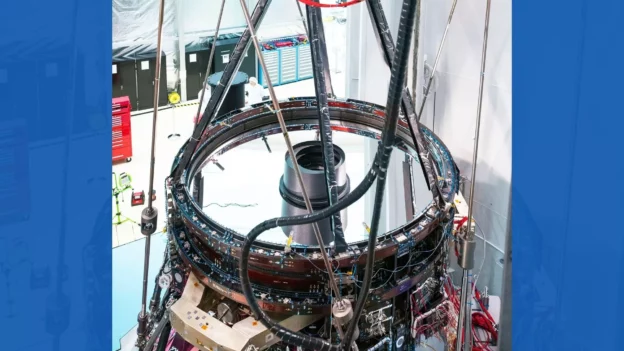Engineers at L3Harris Technologies have successfully introduced and deployed all 10 mirrors on NASA’s Nancy Grace Roman Space Telescope .
The possibilities with the Nancy Grace Roman Space Telescope
This preliminary test, called “ pre-launch first light ,” has demonstrated the newly aligned optics, known as the Imaging Optics Assembly (IOA).
This will allow light to be directed precisely towards the telescope’s scientific instruments , achieving clear images of space once the observatory is launched into the cosmos.
Each of the telescope’s mirrors had been tested individually, but this was the first time they had been evaluated together. Precise alignment can ensure that light moved through the optics in a controlled manner, avoiding blurred images.
Meticulous calibration and focusing for future images
This procedure creates a series of essential iterations for focusing and processing the test images increasingly sharper . Once all the mirrors were placed correctly, they were permanently fixed in place. However, three of them will remain mobile in space , due to actuators that will allow astronomers to optimize alignment during observations.
The successful IOA vision test is recorded as an important event, but there is still work ahead. The optic will then undergo acoustic and vibration testing to ensure it withstands the strong shaking and intense sound waves of launch. Then, a final examination will be carried out under vacuum conditions and at the operating temperature of space, simulating the extreme conditions that the telescope will face once in orbit.

Telescope demonstration and reviews. Source: NASA Goddard.
The successful completion of this stage brings the Roman Space Telescope closer , it is one more step towards its goal of exploring the universe with precision and clarity. With innovative technology and powerful optics, Roman promises to push the limits of our understanding of the cosmos , revealing new secrets about the formation of stars and galaxies, the nature of dark matter and the search for habitable planets beyond our solar system.
Follow us on social networks and don’t miss any of our publications!
Inspenet.com YouTube LinkedIn Facebook Instagram X
Source and photo: NASA


